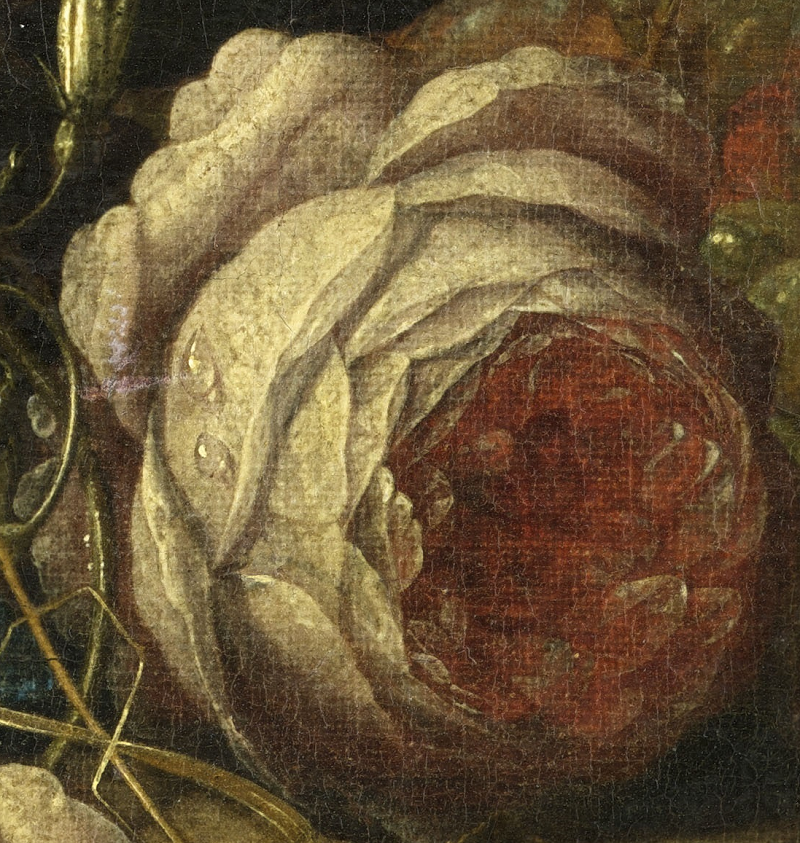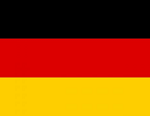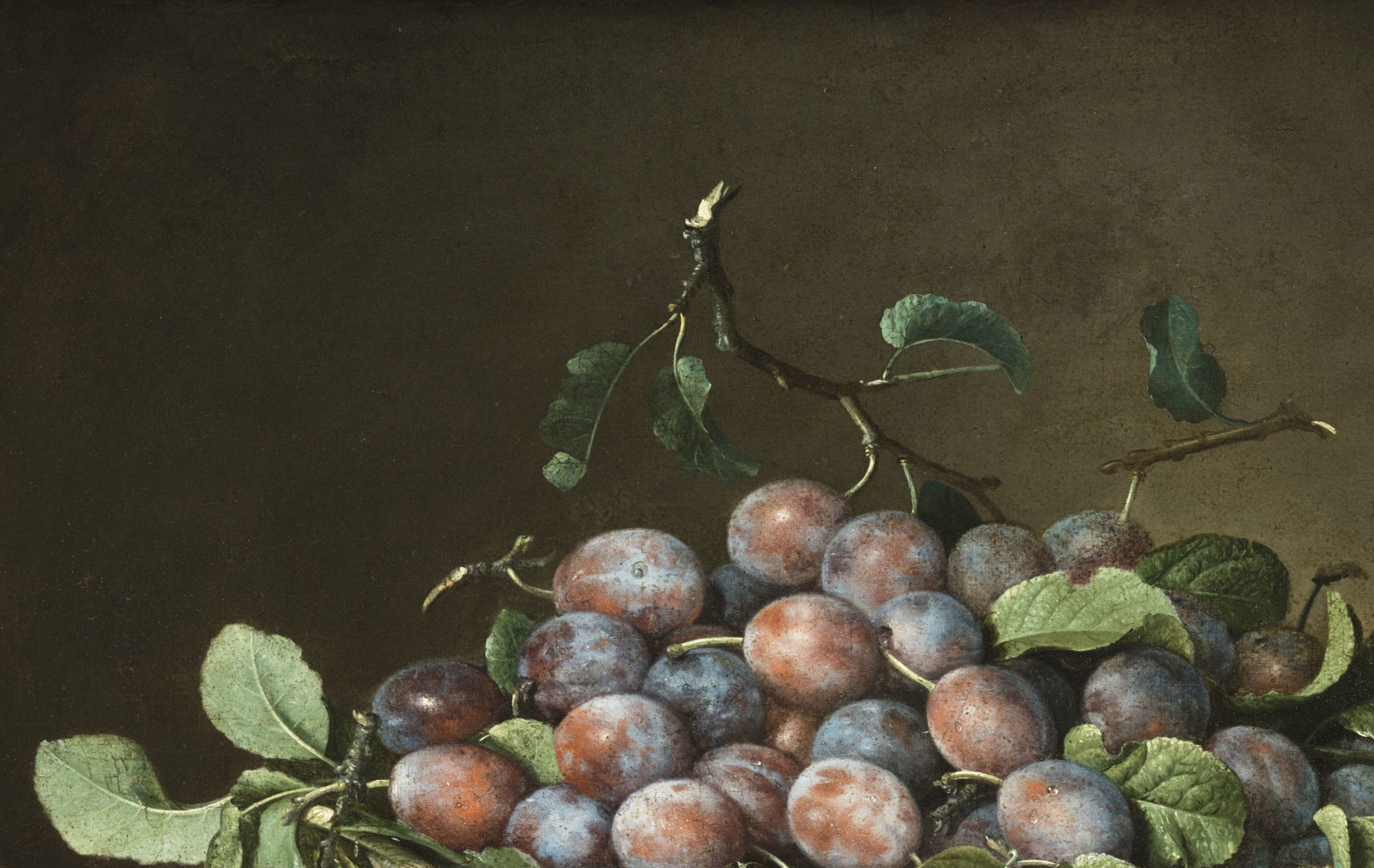
Pivoines, Fleurs et fruits, Nicolas Veerendael
Utilisée par les Grecs et les Chinois de la période Han comme plante médicinale, la pivoine est une plante rustique qui se décline en une quarantaine d’espèces. Symbole de sincérité, elle est particulièrement estimée depuis le Moyen-Age en Europe comme ornement féminin. Nicolas Veerendael l’appréciait tout particulièrement pour ces compositions de bouquets de fleurs et la pivoine orne nombre de ses œuvres.
Genre : Paoenia suffuticosa
Famille : Paeoniaceae
Origine : Europe, surtout Méditerranée, Asie tempérée, Chine, Amérique
Floraison : mai et juin
Information arbre Vivace ligneuse dressée ; 1 m. Tige assez fortement rameuse ; rameaux gros, peu nombreux, bourgeons écailleux.
Information feuilles : Feuilles grandes, bipennées, à 3-(5) segments dentés ou lobés, triangulaires ou arrondis, glabres, vert glauque dessous, assez fermes quelquefois poils sur les nervures
Information fleurs : Fleurs à pédoncule plus ou moins long, odorantes, 10-15 (20) cm de large, solitaires ; 5 sépales, 5 pétales ou plus, variant du blanc au rose foncé ou au rouge carmin, chacun marqué d’une tache basale rouge violacé, bordée de rouge. Nombreuses étamines à filets violacés, anthères blanchâtres mais parfois pourpre
Information fruits : Fruits déhiscents, à 2-5(-8) follicules étalés-divergeants, polyspermes ; graines nombreuses.
Utilisation : massif
Hauteur : 1,50 m
Longévité
Autre information à savoir : En Chine, la pivoine arbustive est surtout appréciée comme ornementale alors que la pivoine herbacée (en chinois 芍药 sháoyào, Paeonia lactiflora) se voit préférer un usage médicinal. Il existe actuellement dans le monde 2000 cultivars de pivoine arbustive dont un millier en Chine.

Used by the ancient Greeks and the Chinese of the Han Dynasty as a medicinal plant, the peony is a woodland plant that comes in about forty species. A symbol of sincerity, the peony has been a fashion accessory for European women since the Middle Ages. Nicolas Veerendael featured the peony in these compositions of floral bouquets, as well as in many of his paintings.
Genus: Paoenia suffuticosa
Family: Paeoniaceae
Origin: Europe, especially Mediterranean, temperate Asia, China, America
Flowering: May and June
Tree Information Erect woody perennial; 1m. Stem rather strongly branched; twigs large, few, scaly buds.
Leaves information: Leaves large, bipinnate, with 3-(5) toothed or lobed segments, triangular or rounded, glabrous, glaucous green below, fairly firm, sometimes hairy on the veins
Flower information: Flowers with more or less long stalk, fragrant, 10-15 (20) cm wide, solitary; Sepals 5, petals 5 or more, varying from white to dark pink or carmine red, each marked with a purplish-red basal spot, bordered with red. Numerous stamens with purplish filaments, whitish but sometimes purple anthers
Fruit information: Fruits dehiscent, with 2-5(-8) spreading-diverging follicles, polysperms; many seeds.
Use: massive
Height: 1.50m
Longevity
Other information to know: In China, the tree peony is mainly appreciated as an ornamental while the herbaceous peony (in Chinese 芍药 sháoyào, Paeonia lactiflora) is preferred for medicinal use. There are currently 2,000 tree peony cultivars in the world, including a thousand in China.

Die Pfingstrose, die von den Griechen und Chinesen der Han-Zeit als Heilpflanze verwendet wurde, ist eine rustikale Pflanze, die in etwa vierzig Arten vorkommt. Als Symbol der Aufrichtigkeit wird er seit dem Mittelalter in Europa als weibliches Schmuckstück besonders geschätzt. Nicolas Veerendael schätzte es besonders für diese Kompositionen von Blumensträußen und die Pfingstrose schmückt viele seiner Werke.
Gattung : Paoenia suffuticosa
Familie : Paeoniaceae
Blütezeit : Mai und Juni
Herkunft : Europa, insbesondere Mittelmeerraum, gemäßigtes Asien, China, Amerika
Informationen zum Baum : Aufrechte verholzende Staude; 1m. Stängel ziemlich stark verzweigt; Zweige groß, wenige, schuppige Knospen.
Blattinformationen : Blätter groß, doppelt gefiedert, mit 3-(5) gezähnten oder gelappten Segmenten, dreieckig oder rund, kahl, unterseits bläulich grün, ziemlich fest, manchmal an den Adern behaart
Blüteninformationen : Blüten mehr oder weniger langgestielt, duftend, 10-15 (20) cm breit, einzeln; Kelchblätter 5, Blütenblätter 5 oder mehr, variierend von weiß bis dunkelrosa oder karminrot, jedes markiert mit einem purpurroten basalen Fleck, rot umrandet. Zahlreiche Staubblätter mit violetten Staubfäden, weißlichen, aber manchmal violetten Staubbeuteln
Fruchtinformationen : Früchte spreizend, mit 2-5(-8) sich ausbreitenden Follikeln, Polyspermen; zahlreiche Samen.
Verwendung : massiv
Höhe : 1,50 m
Weitere Informationen : In China wird die Baumpfingstrose hauptsächlich als Zierpflanze geschätzt, während die krautige Pfingstrose (auf Chinesisch 芍药 sháoyào, Paeonia lactiflora) für medizinische Zwecke bevorzugt wird. Derzeit gibt es weltweit 2.000 Baumpäonien-Sorten, darunter tausend in China.
